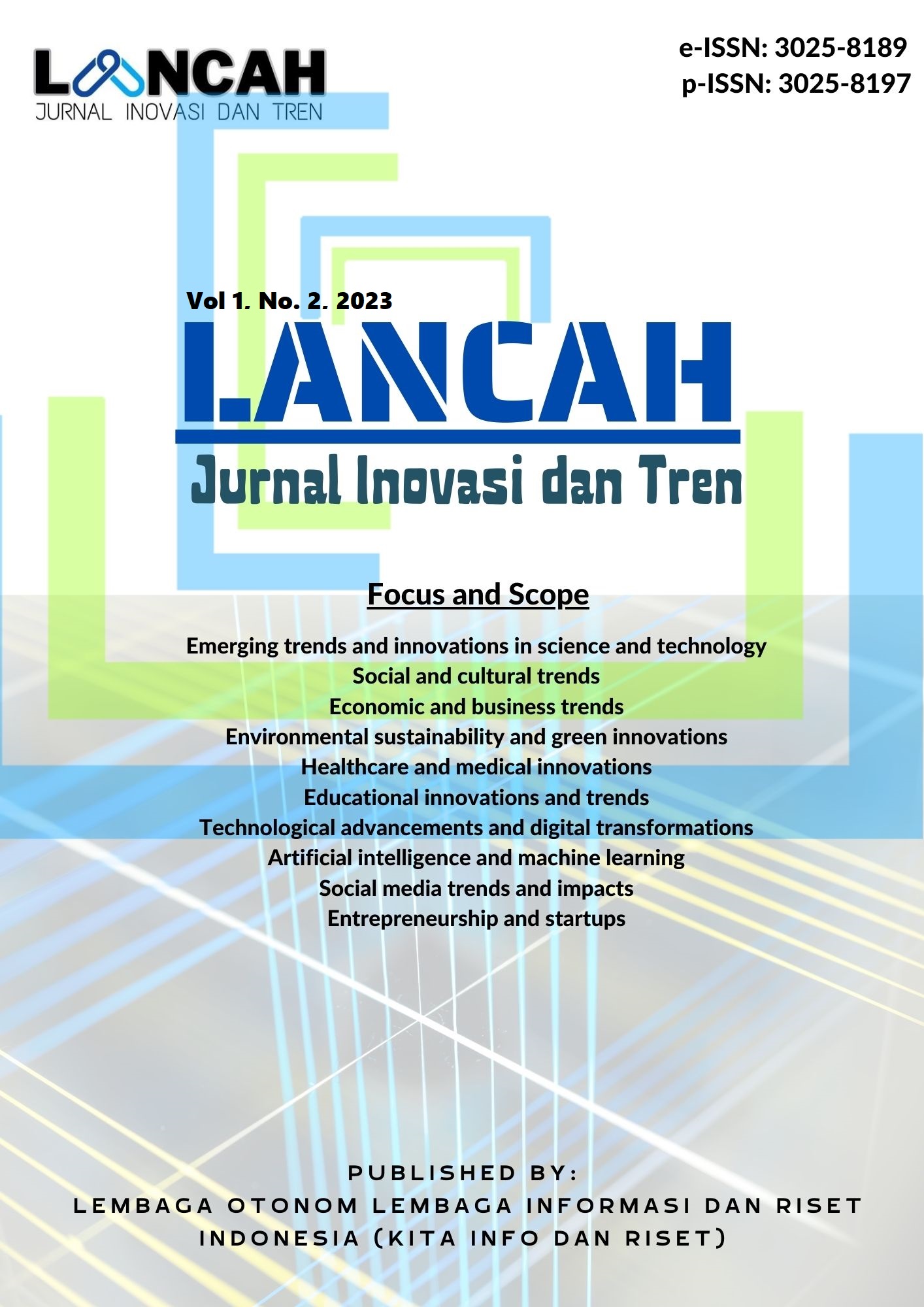Pengaruh Debt to Equity Ratio (DER) dan Book Value Share (BVS) terhadap Return Saham pada PT. Bisi Internasional Tbk.
DOI:
https://doi.org/10.35870/ljit.v1i2.1685Keywords:
Debt to Equity Ratio, Book Value Share, Return Saham, Bursa Efek IndonesiaAbstract
Tujuan penelitian ini untuk mengetahui pengaruh antara Debt to Equity Ratio dan Book Value Share terhadap Return Saham pada PT. Bisi Internasional Tbk. Metode analisi data yang digunakan yaitu dengan regresi linear berganda dengan variabel terikatnya (Y) Return Saham PT. Bisi Internasional Tbk dan variabel bebasnya adalah Debt to Equity Ratio (X1) dan Book Value Share (X2). Lokasi penelitian dilakukan pada PT Bisi Internasional Tbk yang beralamat di Jakarta Indonesia melalui informasi perusahaan dan laporan keuangan perusahaan yang tersedia di website Bursa Efek Indonesia (www.idx.co.id). Instrumen Penelitian yang digunakan dalam penelitian ini yaitu berupa daftar tabel laporan keuangan PT Bisi Internasional Tbk dalam bentuk laporan posisi keuangan dan laporan laba rugi dengan sampel data laporan keuangan PT Bisi Internasional Tbk dari tahun 2012-2021 (10 tahun) dari populasinya selama 14 tahun sejak tercatatnya di Bursa Efek Indonesia pada (IPO) tahun 2007-2021. Hasil penlitian menunjukkan bahwa adanya pengaruh yang signifikan baik secara parsial maupun simultan antara variabel Debt to equity ratio dan variabel Book value per share terhadap return saham pada PT. Bisi Internasional, Tbk. Peneliti menyarankan kepada investor yang akan melakukan investasi, sebaiknya terlebih dahulu mencari informasi yang telah dipublikasikan oleh perusahaan terkait sebagai petunjuk dalam pengambilan keputusan investasi. Dalam hal ini harus diperhatikan pula nilai perusahaan bersangkutan maupun kebijakan-kebijakan keuangan perusahaan tersebut layak sebagai tempat untuk berinvestasi.
Downloads
References
Abdat, Fatmah Amir. 2016. “PENGARUH FAKTOR-FAKTOR FUNDAMENTAL DAN FAKTOR EKSTERNAL TERHADAP RETURN SAHAM PADA SAHAM LQ-45 DI BURSA EFEK INDONESIA PERIODE 2007-2010,” 751–76.
Aletheari, Ida Ayu Made, and I Ketut Jati. 2016. “PENGARUH EARNING PER SHARE, PRICE EARNING RATIO, DAN BOOK VALUE PER SHARE PADA HARGA SAHAM” 17: 1254–82.
Alexander, Nico. 2013. “PENGARUH KINERJA KEUANGAN TERHADAP RETURN SAHAM NICO” 15 (2): 123–32.
Ananto, Niel. 2012. “PENGARUH RETURN ON EQUITY, CURRENT RATIO,DEBT TO EQUITY RATIO, TOTAL ASSETS TURN OVER DAN EARNING PER SHARE TERHADAP RETURN SAHAM” 13 (1): 43–59.
Anugrah, Agung, and Muhamad Syaichu. 2017. “ANALISIS PENGARUH RETURN ON EQUITY , DEBT TO EQUITY RATIO , CURRENT RATIO , DAN PRICE TO BOOK VALUE TERHADAP RETURN SAHAM SYARIAH” 6: 1–12.
Ghozali. (2011) Analisis kinerja keuangan.
Handayati, Ratna, and Noer Rafikah Zulyanti. 2018. “PENGARUH EARNING PER SHARE (EPS), DEBT TO EQUITY RATIO, (DER), DAN RETURN ON ASSETS (ROA) TERHADAP RETURN SAHAM PADA PERUSAHAAN MANUFAKTUR YANG TERDAFTAR DI BEI” III (1): 615–20.
Istri Indah Puspitadewi, Cokorda, and Henny Rahayu. 2016. “PENGARUH DER, ROA, PER DAN EVA TERHADAP RETURN SAHAM PADA PERUSAHAAN FOOD AND BEVERAGE DI BEI” 5 (3): 1429–56.
Kasmir. 2015. Analisis Laporan Keuangan. Jakarta : PT RajaGrafindo Persada.
Murrofiatun, Siti. 2018. “PENGARUH FAKTOR FUNDAMENTAL DAN RISIKO SISTEMATIS
TERHADAP RETURN SAHAM PADA PERUSAHAAN LQ 45.”
Saraswati, Adestia, Abdul Halim, and Ati Retna Sari. 2020. “Pengaruh Earning Per Share, Debt To Equity Ratio, Return on Asset, Price To Book Value, Dan Price Earning Ratio Terhadap Return Saham Perusahaan Manufaktur Yang Terdaftar Di Bei Periode Tahun 2014-2015.” Jurnal Riset Mahasiswa Akuntansi 7 (1): 1–14. https://doi.org/10.21067/jrma.v7i1.4234.
Setiyono, Erik. 2016. “PENGARUH KINERJA KEUANGAN DAN UKURAN PERUSAHAAN TERHADAP RETURN SAHAM” 5.c
Sugiyono. (2016b) Metode penelitian pendidikan, cetakan kelima belas,Alfabeta,Bandung.
Downloads
Published
Issue
Section
License
Copyright (c) 2023 LANCAH: Jurnal Inovasi dan Tren

This work is licensed under a Creative Commons Attribution-NonCommercial-ShareAlike 4.0 International License.
Copyright and Licensing Agreement
Authors who publish with this journal agree to the following terms:
1. Copyright Retention and Open Access License
- Authors retain full copyright of their work
- Authors grant the journal right of first publication under the Creative Commons Attribution 4.0 International License (CC BY 4.0)
- This license allows unrestricted use, distribution, and reproduction in any medium, provided the original work is properly cited
2. Rights Granted Under CC BY 4.0
Under this license, readers are free to:
- Share — copy and redistribute the material in any medium or format
- Adapt — remix, transform, and build upon the material for any purpose, including commercial use
- No additional restrictions — the licensor cannot revoke these freedoms as long as license terms are followed
3. Attribution Requirements
All uses must include:
- Proper citation of the original work
- Link to the Creative Commons license
- Indication if changes were made to the original work
- No suggestion that the licensor endorses the user or their use
4. Additional Distribution Rights
Authors may:
- Deposit the published version in institutional repositories
- Share through academic social networks
- Include in books, monographs, or other publications
- Post on personal or institutional websites
Requirement: All additional distributions must maintain the CC BY 4.0 license and proper attribution.
5. Self-Archiving and Pre-Print Sharing
Authors are encouraged to:
- Share pre-prints and post-prints online
- Deposit in subject-specific repositories (e.g., arXiv, bioRxiv)
- Engage in scholarly communication throughout the publication process
6. Open Access Commitment
This journal provides immediate open access to all content, supporting the global exchange of knowledge without financial, legal, or technical barriers.











